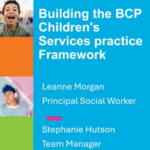Advocacy is currently viewed highly favourably
by the government and moves are afoot to further professionalise it.
But what is a dvocacy’s true value, asks Natalie Valios.
Advocates – people who “support, speak in
favour of, or plead for” someone else – are a hot topic right now.
The voice of the service user is being given unprecedented
importance in decision-making, and advocates are increasingly being
relied upon to ensure that individuals’ wishes and needs are
represented.
Four
major government initiatives will create a greater role for
advocates: the Valuing People white paper1
promises funding to develop advocacy schemes for people with
learning difficulties; mental health reforms are expected to give
detained patients a statutory right to an advocate; the Patient
Advocacy and Liaison Services (Pals) will form part of the NHS
reforms in England and Wales; and Quality Protects guidance
requires advocacy services to be developed for children in
need.
So, a
victory for the advocacy movement? Perhaps, says Rick Henderson,
project director of independent voluntary organisation Advocacy
Across London. “But, cynically, it’s more likely that there’s a
bandwagon element to it because it fits with the modernisation
agenda of putting people first. Things go in and out of fashion,
and we are quite fashionable at the moment.”
The
idea behind advocacy is simple: people should be supported to make
their views known. More than that, it is about working with
agencies such as housing departments and social services, to
encourage them to listen to what people are saying. As Henderson
says: “It’s no good helping people to speak up if nobody
listens.”
The
advocacy movement originated in the US and Canada in the 1960s,
beginning with citizen advocacy (see panel). It took another 20
years to arrive in the UK, but Britain probably now has more models
of advocacy than any other country.
There
are up to 800 advocacy projects across the country. Roughly 150 are
based in London, including 20 citizen advocacy, and 15 volunteer
advocacy projects.
Initially, advocacy grew in
response to the plight of people with learning difficulties in
large Victorian asylums. It has developed to include people with
mental health problems, children in care, and a wide range of other
client groups including physically disabled people, those with
HIV/Aids, and older people.
Unfortunately, advocacy can be a
victim of its own success. As it becomes more mainstream and
projects accept more local and health authority funding, they risk
losing their independence, says Henderson. Conflicts of interest
are unavoidable if advocates’ salaries are being funded by the
organisation their client is in conflict with.
Direct
government funding – bypassing local funding streams – would give
projects real independence. The Valuing People white paper
paves the way for this. The government has appointed two national
independent learning difficulties organisations, the British
Institute of Learning Disabilities and Values into Action, to
distribute money to citizen advocacy and self-advocacy projects
respectively.
But
what is it like to be on the receiving end of advocacy? Patrick
Colligan, now service manager for Liverpool & District Mind’s
advocacy service, suffers from depression and has used a paid
advocate several times in the past, despite his initial concern
about the danger of misinterpretation. “I have come close to being
detained,” he says. “It’s only because I had a competent advocate
that I wasn’t.”
He
also took his advocate to the “daunting” multi-disciplinary team
meetings which reviewed his medication. When Colligan is ill he
finds it difficult to express himself, and he found it reassuring
to have an articulate advocate present who could explain to the
team whether he was having any side effects from the medication.
“People need to be protected from the system,” he says.
Advocacy is generally painted in
a good light, but there is scope for things to go wrong, says
Henderson. While skilled advocates can achieve the client’s desired
outcome, poor advocates can make things worse. Clients sometimes
receive even worse treatment after a complaint has been made,
because they have made a fuss and brought in an
outsider.
Most
health and social care professionals would say that advocacy is
great in theory, but not necessarily so in practice, says solicitor
Luke Clements. Advocates’ objective is to make themselves awkward,
and statutory authorities will not always want to hear what they
are saying.
Advocates can also bring their
own agenda to bear on a situation. “They occasionally have their
own axe to grind,” says Clements. “They may have become an advocate
because of a bad experience with the statutory sector and instead
of advocating for the client’s best interests they might use their
position to settle old scores.”
So how
do advocacy projects ensure that their workers are competent?
According to Henderson, most advocacy projects have stringent
checks, including police checks, in place. “We are all conscious of
the need to safeguard people. One bad advocate could cause a lot of
problems for the movement, so we protect ourselves and our users
carefully. We can’t afford for that to happen to a movement that is
still relatively new.”
But
part of the trouble is that there is no standard training programme
for advocates. Various certificates are on offer but there is no
real benchmark, and no consistency. In an attempt to resolve this,
Advocacy Across London wants to introduce a minimum level of
training for all advocates, and has set up a training work group
involving all key agencies.
“Advocates are not part of a
statutory ethos,” says Clements, “but they need the confidence of
statutory providers.” He suggests that one way of achieving this is
through an academic qualification – and he is involved with a
postgraduate diploma in advocacy which will be available at the
University of Warwick from the autumn.
Training and national standards
combine to make the biggest issue in advocacy at the moment. The
government has made it clear that the only way it is going to fund
advocacy in the long term is if standards are in place, says
Henderson. To this end, the Department of Health has commissioned
the National Youth Advocacy Service to develop standards for
advocacy work with young people, and the University of Durham to
develop standards for mental health advocacy.
Meanwhile, standards are being
brought in to cover advocacy projects helping people to make
complaints against the NHS, overseen by the new Commission for
Patient and Public Involvement. The feeling among advocacy projects
is that these standards are almost certain to be broadened out to
include all advocacy.
Advocacy projects recognise that
standards are necessary to safeguard both advocates and clients.
The concern, according to Henderson, is that they are developed in
partnership rather than imposed by government.
And
the Human Rights Act 1998 will give added weight to advocates, says
Clements. Article 6 of the European Convention of Human Rights
gives everyone the right to a fair hearing, while article 10 is the
right to express yourself. As Clements says: “How can that have any
meaning without advocacy?”
– For
more information including a directory listing over 100 training
courses go to www.advocacyacrosslondon.co.uk
1
DoH, Valuing
People: A New Strategy for Learning Disability for the 21st
Century, The Stationery Office, 2001
Models of advocacy
– Citizen advocates are unpaid members of the
local community. They have long-term, one-to-one relationships with
the client. Schemes actively seek out people who may benefit from
this type of relationship. Advocacy scheme matches advocate and
partner.
– Volunteer advocates are unpaid but may
receive out-of-pocket expenses. Partnerships focus on resolving
specific issues rather than long-term support. Advocates may
support more than one partner.
– Self-advocacy is organised and driven by
disabled people or service users, offering mutual support and
confidence building, challenging stereotypes and
discrimination.
– Peer advocates share common experiences or
environments with their partner, and can be one-to-one or
casework-based. There are few established peer advocacy
schemes.
– Professional casework advocates have a
caseload of people they support and are usually team-based paid
workers. Each partnership is task-based, with targets.
Relationships are usually short-term.
Source:R Henderson, M Pochin, A Right Result?
Advocacy, Justice and Empowerment, The Policy Press, 2001
Do you have any experience of advocacy working
well, or badly? Share your experiences with us in our online
discussion forum. Have your say by sending an e-mail to
comcare.haveyoursay@rbi.co.uk before 25 April and your responses
will appear on Community Care’s website at www.community-care.co.uk
on 26 April.



 Bournemouth, Christchurch and Poole
Bournemouth, Christchurch and Poole  Hampshire County Council
Hampshire County Council  Oxfordshire County Council
Oxfordshire County Council  South Gloucestershire Council
South Gloucestershire Council  Wokingham Borough Council
Wokingham Borough Council  Webinar: building a practice framework with the influence of practitioner voice
Webinar: building a practice framework with the influence of practitioner voice  ‘They don’t have to retell their story’: building long-lasting relationships with children and young people
‘They don’t have to retell their story’: building long-lasting relationships with children and young people  Podcast: returning to social work after becoming a first-time parent
Podcast: returning to social work after becoming a first-time parent  How managers are inspiring social workers to progress in their careers
How managers are inspiring social workers to progress in their careers  Workforce Insights – showcasing a selection of the sector’s top recruiters
Workforce Insights – showcasing a selection of the sector’s top recruiters 

 Facebook
Facebook X
X LinkedIn
LinkedIn Instagram
Instagram
Comments are closed.